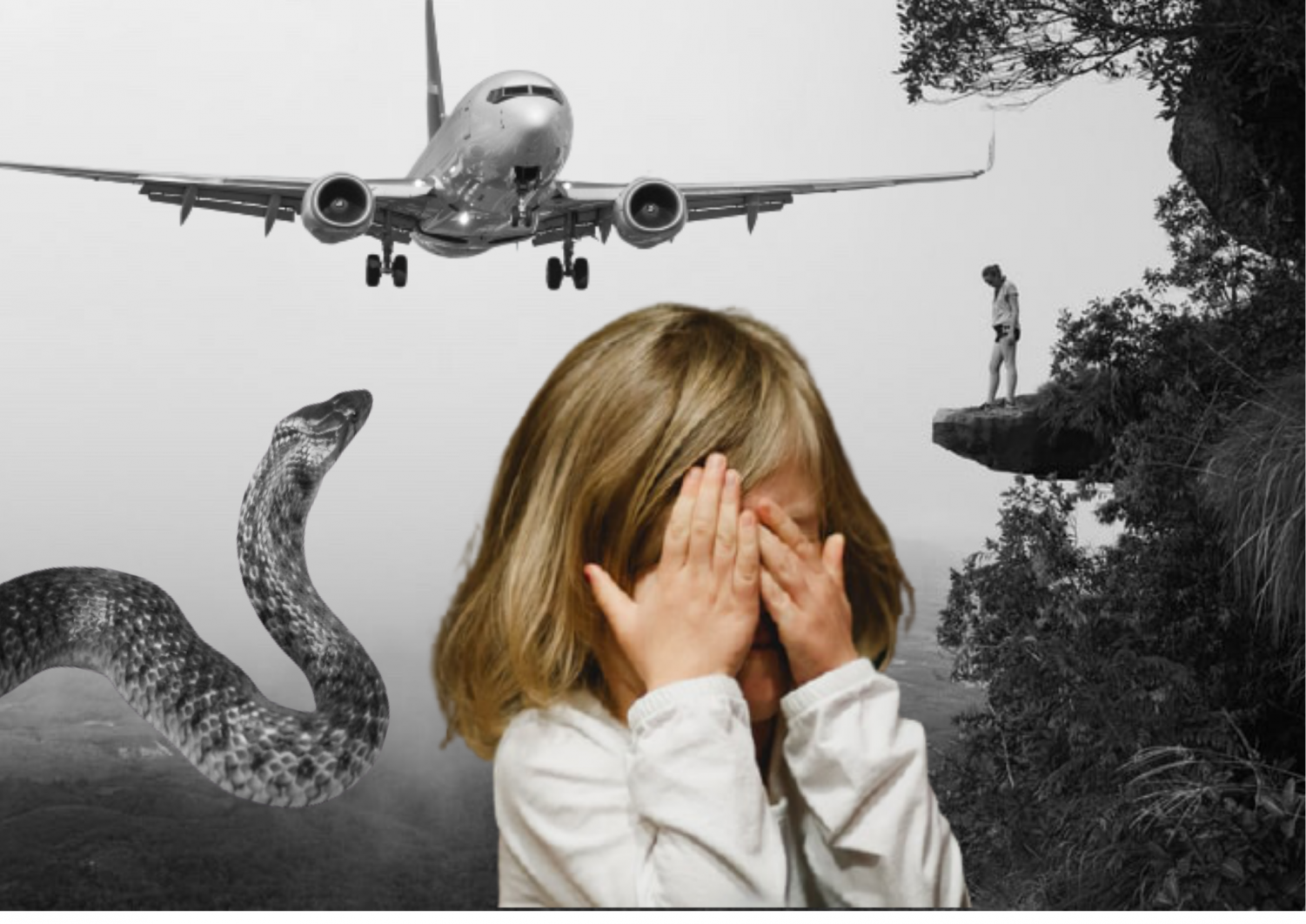Exploring Beyond Fears: What Makes a Phobia?
October 2, 2020
Have you ever felt nauseous at the sight of needles or worried about your safety during a plane trip? While these may seem like simple fears, constant distress and avoidance of these situations may indicate a phobia. But you are not alone; over 19 million people in the US deal with phobias. There are over five-hundred phobias with hard-to-pronounce names, which should not be a problem unless you have hippopotomonstrosesquippedaliophobia (ironically, the fear of long words).
But what is the difference between a fear and a phobia? Fears are defined as “an unpleasant often strong emotion caused by anticipation or awareness of danger,” and a phobia is “an exaggerated usually inexplicable and illogical fear of a particular object, class of objects, or situation.” In short, phobias are based on fears. Fears are common occurrences that everyone must endure, but phobias can prevent a person from living a fulfilling life. For example, a person with a fear of dogs might avoid petting them. In contrast, a person who has a phobia of dogs, cynophobia, will do anything possible to avoid dog interactions. Some may find it surprising that a person could fear a gentle and loveable animal such as a dog, but a traumatic experience might have caused their phobia.
The main group of phobias is social phobia, agoraphobia, and specific phobias. Social phobia includes situations where a person could feel embarrassed or humiliated in front of others. Agoraphobia causes anxiety in places that are difficult or embarrassing to escape. There are five types of specific phobia categories: animal types, natural environment types, blood-injection-injury types, situational types, and other types.
A student who wishes to remain anonymous said, “I have one phobia: thalassophobia [fear of deep bodies of water]. Around eighth grade and freshman year, I was terrified of swimming in the ocean or going to aquariums because of the sea animals. It isn’t as bad anymore, but it was really awful for a period of time. My thalassophobia still somewhat affects me, but it has shifted over more to the side of the fear of sea creatures themselves.”
Specific phobias can stem from different situations, such as direct learning experiences. For example, a car crash might result in a person’s fear of driving. Observational learning experiences can also lead to phobias, such as a child might develop a similar fear that they notice their parents experiencing. Informational learning can inform a person on a fear they might not have yet experienced, such as reading about a shark attack.
“I have a fear of getting shots at the doctor. I discovered this fear when I was in fifth grade when I had to get my flu shot because they didn’t have the flu mist anymore. My feelings toward shots have not changed at all, and I simply do not like them,” said Sophia Marcantoni (’23).
To be diagnosed with a phobia, there must be a constant fear of at least six months. If the fear only occurs once, it does not qualify as a phobia. Extreme stress and an immediate anxiety response are also criteria. The person must recognize that their fear is excessive compared to the actual danger involved. Avoidance and anxious anticipation of the fear must interrupt the person’s routine. Lastly, to be qualified as a phobia, the distress must not result from a preexisting mental condition, such as obsessive-compulsive disorder (OCD), post-traumatic stress disorder (PTSD), etc.
Childhood phobias occur most often from ages five to nine, but can also carry on into adult life. Common phobias for children include the fear of flying, bugs, heights, and blood. In adults, 80% of phobias are less likely to go away unless treated.
“When I was younger, I used to be fearful of going to the dentist. I remember always being scared that I was going to have cavities. I no longer have this fear and actually like going to get my teeth cleaned now,” said Stephanie Oehler (’21).
Physical symptoms of phobias can include sweating, trouble breathing, heart palpitations, dizziness, nausea, tremors, chills, hot flashes, or chest pain. Phobias can invoke irrational feelings of danger, trigger a person’s “fight or flight” response, and cause anxiety-related symptoms. Merely thinking about their phobia may cause anxiety. Phobias can interrupt daily routine, lower self-esteem, and possibly cause strains on relationships since the person will want to avoid situations that could trigger their phobia. For example, a person with claustrophobia, the fear of confining spaces, might not enter an elevator.
While there is no way to prevent phobias from developing, there are methods to manage the effects. Cognitive-behavioral therapy with exposure treatment is an effective form of treating phobias. It can teach patients new skills to react differently to possible anxiety triggering events. Learning to understand thinking patterns will help them reduce and stop symptoms. There is also medication that can be taken to prevent panic attacks.
Sydney Thomas (’23) said, “I was about five when I found out that I have a bad phobia of heights, and it was because I fell off a rope at my gym. I was climbing to the top because we were conditioning, and my hand slipped, so I fell. After that, I didn’t really like going to high places. It has prevented me from going on tall rides and roller coasters, and I didn’t like flying on planes that much. My fear has gotten better over the years. To conquer my fear, I have gone to some rope courses with my friends.”
Spare a thought today for all the birds who suffer from a fear of heights.
— Josh Bisanz (@bisnasty) September 28, 2020

